How to make a laundry room quieter – tips and tricks from the experts
If you’re lucky enough to have one, this is how to make a laundry room quieter – to allow you to put a wash on without thinking about it

The primary function of a laundry room is to provide a separate space in which you can clean and dry all your clothing, linens and bedding, without intruding into the rest of your home. And while it’s an infinitely useful space, it can also be a room that generates a lot of noise, mainly from the big bulky machines that clean and dry our clothes.
So as well as having a laundry room that is well organized and easy to use, it’s also important that the space operates as quietly as possible, especially if it’s close to bedrooms, or social spaces like your kitchen. Interior designer Kristina Phillips, of Kristina Phillips Interior Design, says ‘having a laundry room close to your living or sleeping areas is great for convenience, but can sometimes be loud – especially when there are bulky items in the dryer. But to reduce the rattle, there are luckily a few things that a homeowner can do.’
If you struggle with noisy washing machines, clothes dryers, and other such tech in your laundry room, these are the tips and tricks experts suggest for making the space as quiet as possible – so you can enjoy the rest of your home in peace.
How to make a laundry room quieter according to the pros
Don't let a loud laundry room ruin your peace and quiet. Here, experts share their favorite tried-and-tested tips on how to make a laundry room quieter.
1. Add a layer of drywall if you can
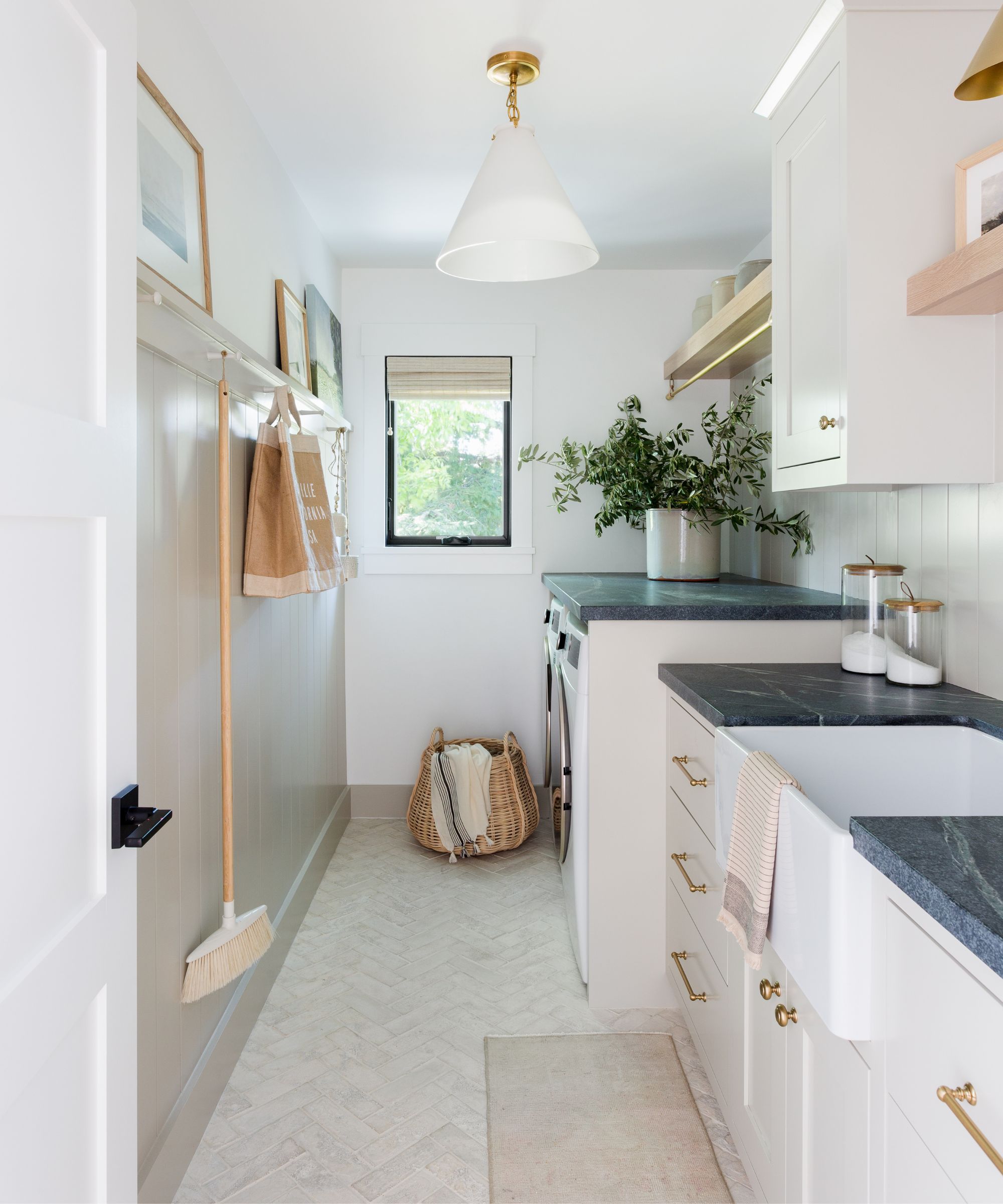
For those able to make changes to the structure of their laundry room (e.g. those doing renovations, or with the budget for modifications), adding a laying of drywall is perhaps one of the biggest and most effective changes that will seriously reduce any sound being emitted from your laundry room.
‘An extra layer of drywall can significantly reduce the noise emanating from machines. More layers mean fewer vibrations passing through, which reduces noise,’ Artem Kropovinsky, interior designer and founder of Arsight, says.
Property expert Jordan Woolf, CEO of We Buy Houses In Bama, recommends installing a specific type of drywall, if possible. ‘Adding a layer of "soundproof drywall" is indeed a very effective way to reduce noise. It's denser than typical drywall and designed to absorb and mitigate sound,’ he says.

Jordan Woolf is a property expert and the CEO of the real estate investment company We Buy Houses In Bama. Jordan purchases houses through a cash offer allowing the seller to sell the house in as-is condition.
Though this is a decent undertaking, it shouldn’t take longer than a week to install, and could provide serious benefits. Jordan explains, ‘this process could take a few days due to multiple steps involved such as installation, taping, mudding, sanding, and painting.’
If this isn’t an option for you, you could also add some acoustic panels to your laundry room. ‘For anyone seeking a dual-purpose solution that can add a design touch while suppressing noise, these are a great option. Usually made of foam, these absorb sound waves and reduce echo; mount them on walls or ceilings for maximum impact,’ Artem explains.
‘Just ensure you also use acoustic caulking to seal the gaps, boosting the room's sound resistance.’
2. Insulate with rugs and carpeting

Arguably the simplest way to make a laundry room quieter is to add some softness to your flooring, in the form of a rug, or even carpeting – if you can spend a bit more money and don’t mind having the space out of action for a few days.
As you may suspect, ‘soft materials absorb sound vibrations, acting as a barrier between the machine's noise and the rest of the home,’ Artem reveals.
Not only will this option help to sound-proof your space, but it’ll also add a fun design element to your room, adding some texture and softness to a room that is full of machines and other technical gear.
3. Install custom cabinetry if possible
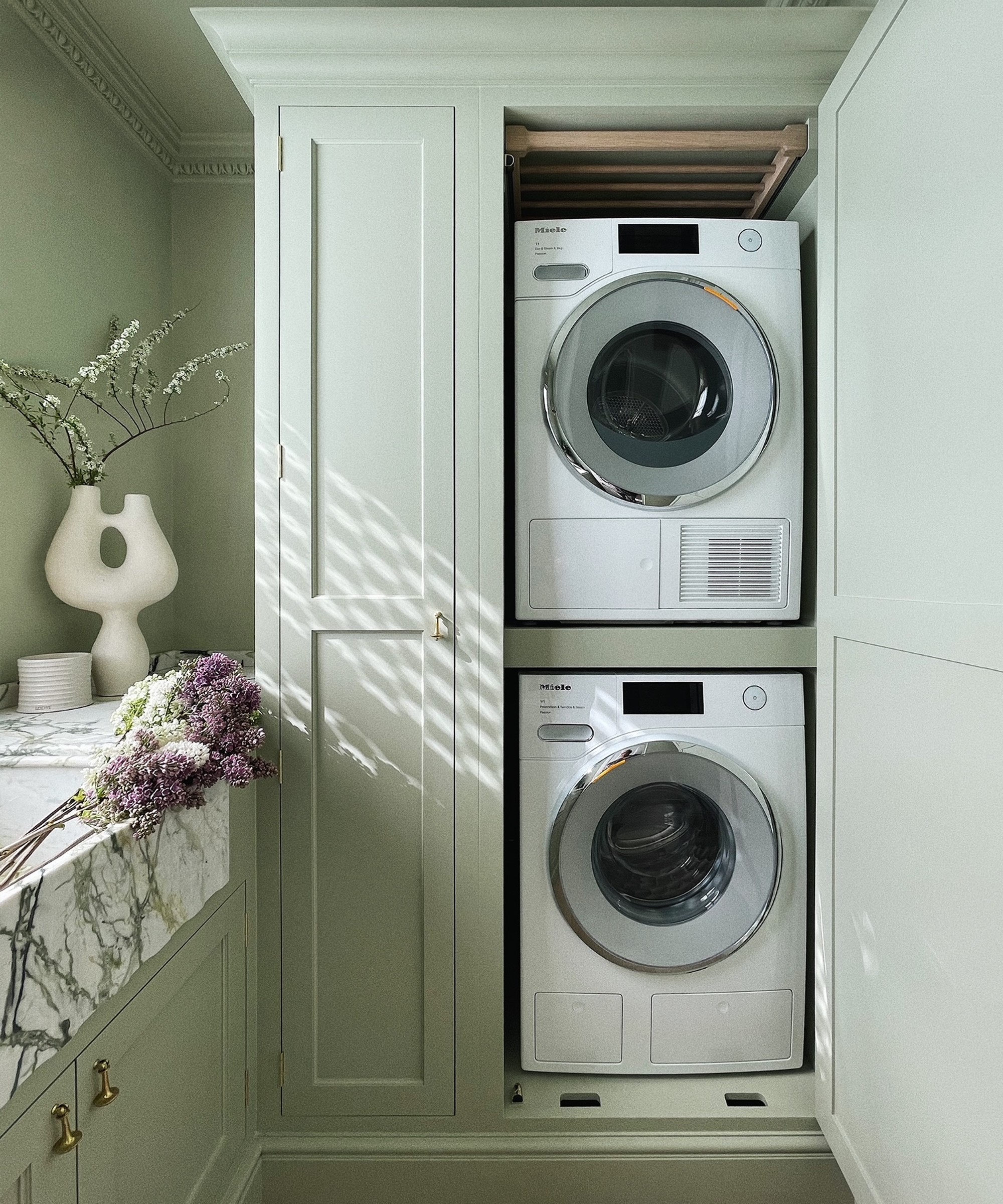
Not only can built-in cabinetry in a laundry room be a great way to hide a washer and dryer – but it can also help to reduce the noise of your machines, too. Kristina explains, ‘Building cabinetry around the machines will absorb some of the noise, as well as provide more storage in your laundry room.’

Kristina Phillips is an interior designer and owner of Kristina Philips Interior Design. To fulfill her dream of practicing interior design, she completed the Interior Design Program at the New York School of Interior Design. Prior to starting her own eponymous firm in 2020, she had been the principal designer and co-founder of K+K Interior Design for over 6 years.
‘These solid structures can act as barriers, deflecting and absorbing the sounds produced by machines,’ Artem says.
Once again, installing cabinetry around your machines is not only a solid choice practically, but it’s also a great laundry room storage idea. ‘Adding cabinets around the machines not only reduces noise, but also offers a storage solution for detergents, iron, and other laundry accessories,’ Kristina says.
Use open shelving within your cabinetry for your more sleek looking items, such as towels, linens or baskets – and stash away any unsightly products behind closed doors, such as stain removers, laundry pods, or, your dirty laundry itself.
4. Incorporate soft accessories into the room
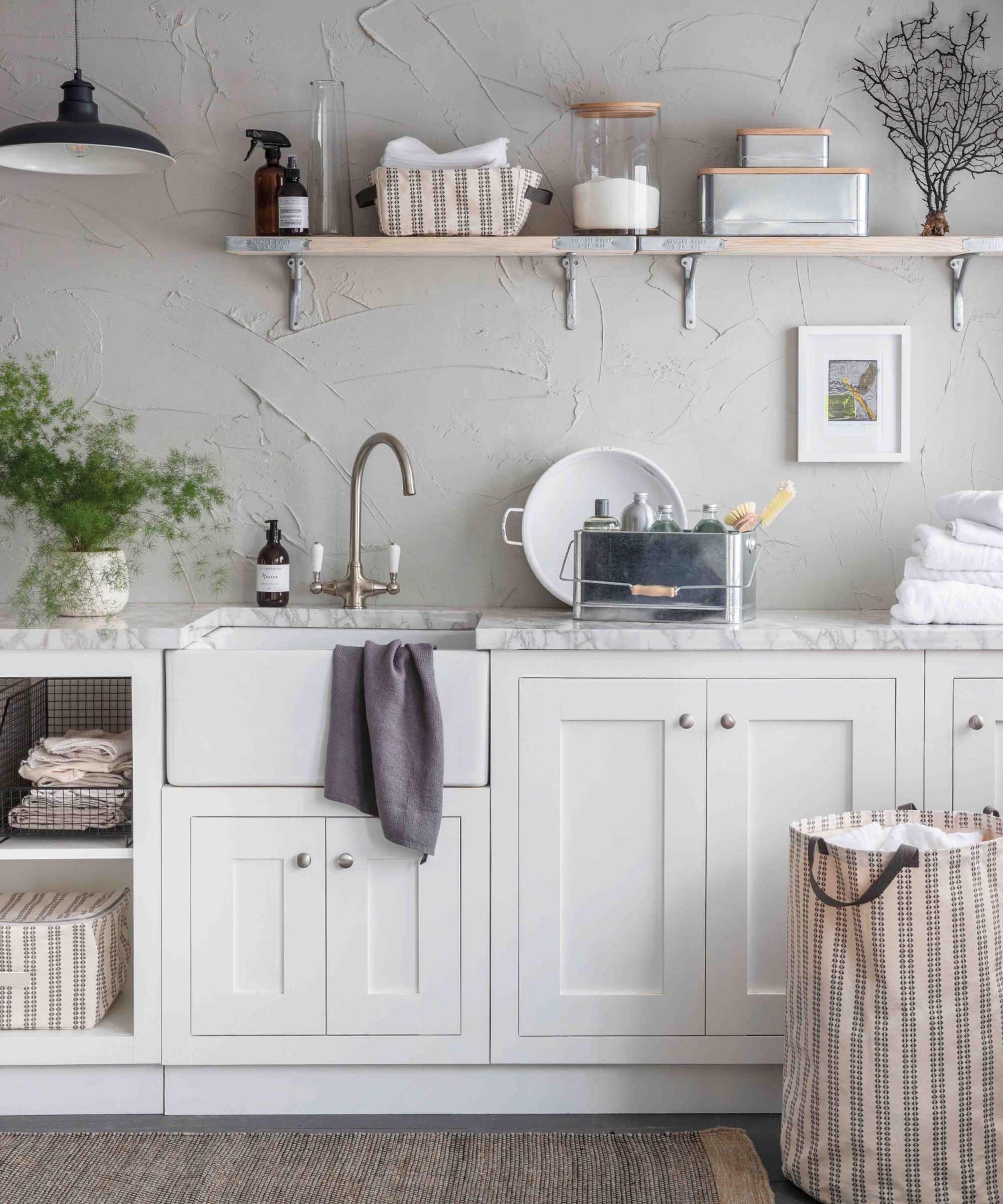
Incorporating soft furnishings and accessories when designing your laundry room can help to reduce noise levels in much the same way as a carpet or rug would. This might include small items like fabric or woven baskets – but you’ll likely notice an even bigger difference if you’re able to add in larger pieces, such as soft armchairs, beanbags, cushions and throws into the space too.
Jordan explains, ‘Soft items can absorb the sound waves rather than reflecting them back into the room. Elements like curtains and fabric-covered furniture can significantly help.’
You can even soundproof your laundry room walls with different textures. ‘Textile wall hangings can also be a great option,’ Artem says. ‘Beyond their decorative appeal, wall hangings made of fabric can absorb sound, especially when layered; like rugs, textiles prevent sound from reverberating.’
5. Add weatherstripping to your door
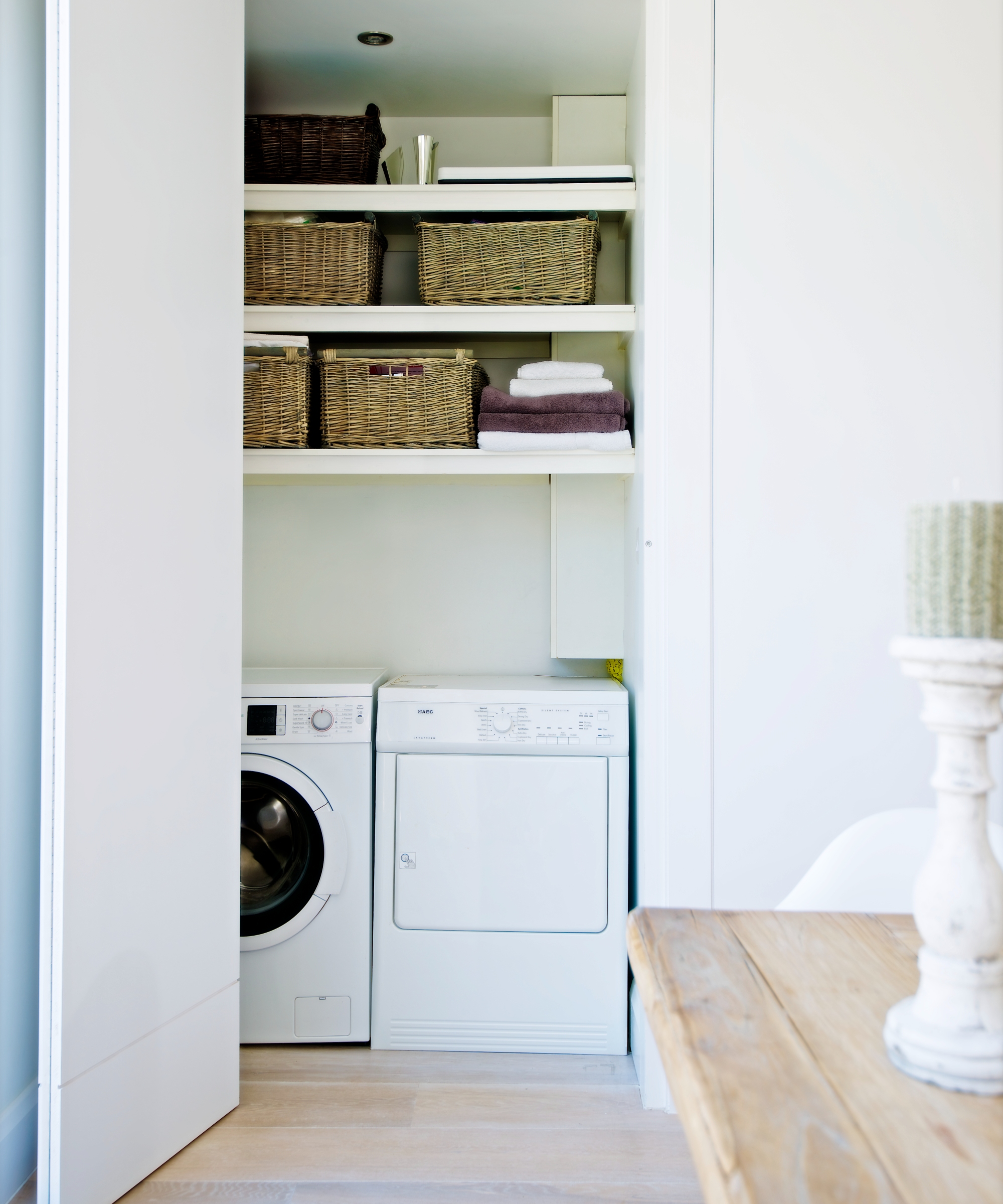
It’s unlikely that your laundry room will have interior windows, meaning the main spot noise will be escaping from is the door. And there are ways to tackle sound leaking from doors – the first being an option called weatherstripping.
‘Weatherstripping simply means filling up the gaps around doors and windows using specialized materials to prevent air and noise leakage,’ Jordan says. ‘This can be a suitable way to reduce noise from the laundry room seeping into other parts of the house. It is inexpensive, easy to install, and can double up as thermal insulation.’
Artem agrees, saying, ‘It’s a brilliant option for homeowners on a budget, seeking a minimal yet effective solution.’
The material the door itself is made of can also contribute, with Kristina explaining that, ‘having a solid wood door will also help in blocking out sound.’
‘If the noise is substantial, replacing the door could be an option,’ Jordan explains. ‘Consider a solid-core door, which can block noise more effectively than a hollow-core door. Additionally, door sweeps or seals can be installed on the existing door to prevent noise leakage.’
6. Secure your washing machine and dryer

Given that our washing machines and clothes dryers are the main culprits for noise in laundry rooms, it makes sense to minimize the actual sounds coming from these appliances in any way possible, in order to reduce noise overall.
To do this, you’ll want to address any movement within the machines. Kristina suggests, ‘Make sure the machines are securely attached to the floor to help prevent shaking – this rattling is often the cause of laundry room noises.’
‘You should also make sure that the machines are level with the floor (in that they aren’t placed on uneven flooring) as this will minimize shaking, too.’
If you haven’t already, it can also pay off to secure any particularly noisy machines to the wall, rather than allowing them to stand alone. ‘I would suggest trying to use double-sided suction cups to secure a machine to a wall,’ Kristina says. ‘If the machines are flush against a wall, wedging foam between them might also help stabilize the appliances.’
What can I put under my washing machine to make it quieter?
Aside from securing your washing machine to the wall, and ensuring that machines are level with the floor and surrounding walls, you can go even further in making your appliance quieter by sliding something underneath it, too.
‘You can use anti-vibration pads or rubber mats under the washer, and dryer, to reduce vibrations and minimize noise,’ Kristina explains.
These are available on Amazon or at hardware stores, and if thin enough, can simply be slid under the washing machine without an issue. However, some mats will be thicker and will require you to lift the machine out and up (ensure you have help for this part), in order to attach them.
You can also purchase anti-vibration pads specifically for the four corners/feet of your washing machine too – though this again will require the machine to be lifted up and onto its side, in order to install them properly.
Though there are multiple ways to reduce the noise coming from your laundry room, one of the easiest ways is to ensure you aren’t causing the machines themselves to make excess noise, when doing your daily laundry loads. ‘Always make sure the machines are not overloaded, as this can also cause them to rattle and roll!’ Kristina explains.
Sign up to the Homes & Gardens newsletter
Design expertise in your inbox – from inspiring decorating ideas and beautiful celebrity homes to practical gardening advice and shopping round-ups.
Amy Hunt is a freelance lifestyle writer and editor primarily covering homes and interiors, wellness, travel and careers. She was previously Lifestyle Editor at woman&home, commissioning and editing the homes, books and features sections of the website,
In 2019, she won the AOP Digital Journalist of the Year Award, for her work on womanandhome.com. Having worked in the industry for over eight years, she has contributed to a range of publications including Ideal Home, Livingetc, T3,Goodto, Woman, Woman’s Own, and Red magazine.
-
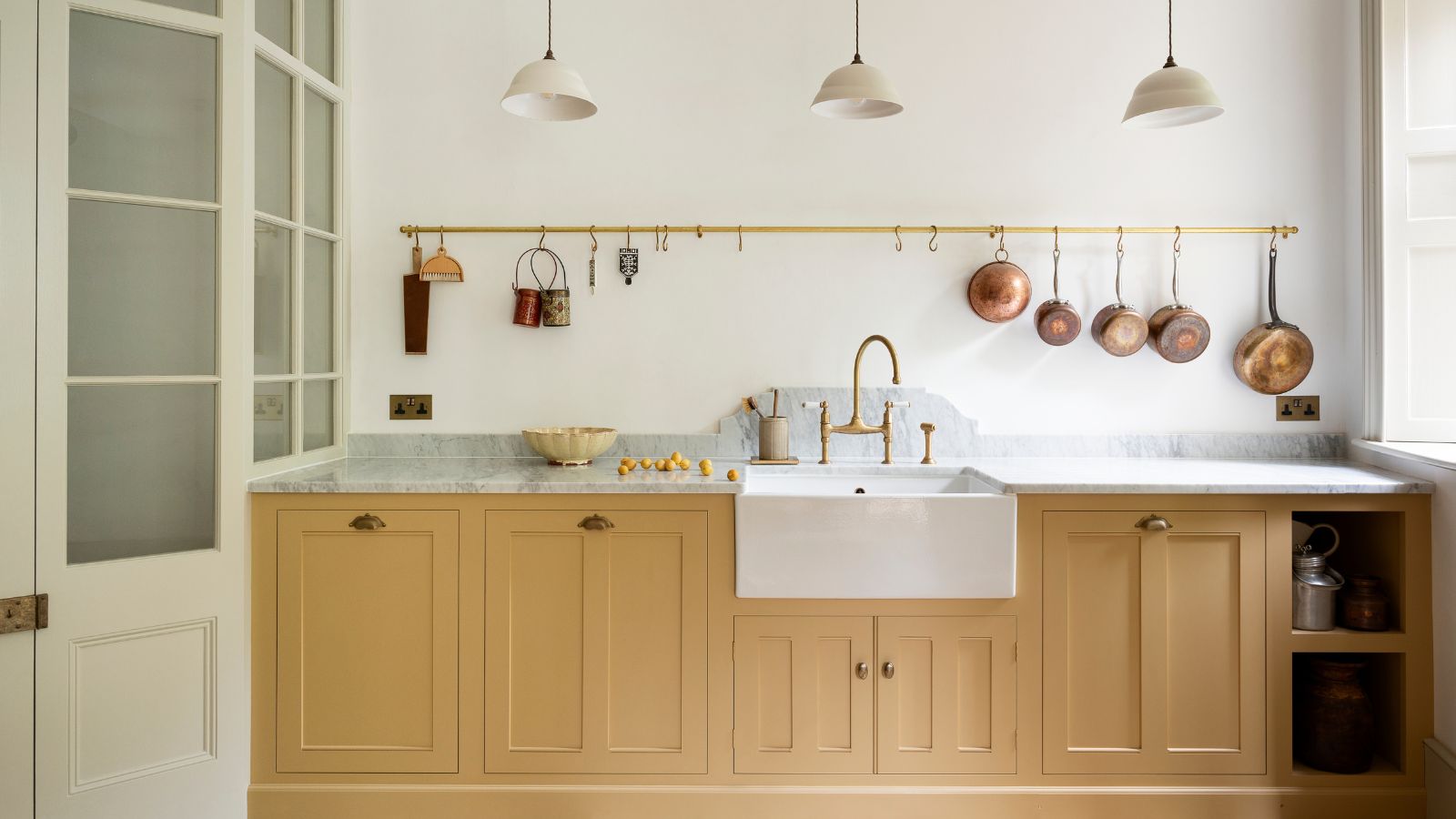 What colors go best with butter yellow? 8 equally delicious shades to pair with spring's hottest color trend
What colors go best with butter yellow? 8 equally delicious shades to pair with spring's hottest color trendInspired to elevate your home this spring with chic pale yellows? Here are the best colors to complete your scheme
By Emily Moorman
-
 Sarah Michelle Gellar's entryway is tranquil and elegant thanks to white and wood accents – her neutral style is replicable from $33
Sarah Michelle Gellar's entryway is tranquil and elegant thanks to white and wood accents – her neutral style is replicable from $33The actress's entryway features a wood console table, wood floors, and crisp, white paint for a warm and inviting atmosphere
By Hannah Ziegler